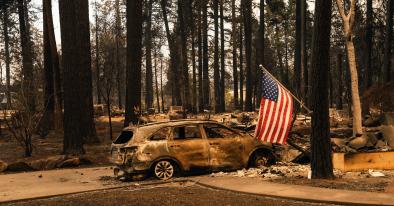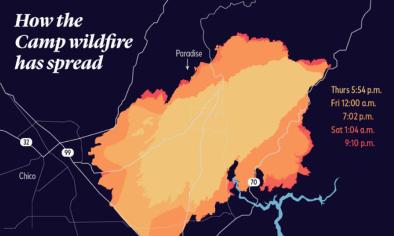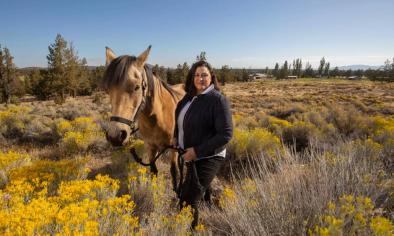See how a warmer world primed California for large fires

Fires are natural in California: Many of its ecosystems, from the chaparral of Southern California to the northern pine forests, evolved to burn frequently. But since the 1980s, the size and ferocity of the fires that sweep across the state have trended upward. Fifteen of the 20 largest fires in California history have occurred since 2000.
The graphic above shows why: Most of the state’s hottest and driest years have occurred during the last two decades as well.
Over the past century, California has warmed by about three degrees Fahrenheit. That extra-warmed air sucks water out of plants and soils, leaving the trees, shrubs, and rolling grasslands of the state dry and primed to burn.
That vegetation-drying effect compounds with every degree of warming, explains Daniel Swain, a climate scientist at the University of California, Los Angeles, meaning that plants lose their water more efficiently today than they did before climate change ratcheted up California's temperatures.
Because of this effect of climate change, wildfires are increasing in size, both in California and across the western U.S., says Park Williams, a fire expert at Columbia University. Since the 1980’s, he and a colleague reported in 2016, climate change contributed to an extra 10 million acres of burning in western forests— an area about the size of Massachusetts and Connecticut combined.
Changes in precipitation are another factor. California's summer dry season has also been lengthening. Each extra day lets plants dry out more, increasing their susceptibility to burning.
“Usually—or, I don't want to even say usually anymore because things are changing so fast—we get some rains around Halloween that wet things down,” says Faith Kearns, a scientist at University of California Institute for Water Resources in Oakland. But in the past few years, those rains haven't come until much later in the autumn—November, or even December.
Related Content





